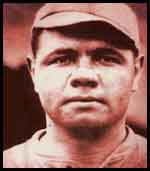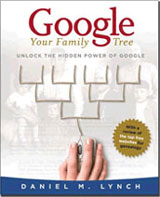|
|
|
|

1920 Census
 The 1920 U.S. Federal Census was the fourteenth enumeration of the United States population. While the official enumeration date was January 1, 1920 and marshalls had an entire month to complete their work, more Americans seemed preoccupied with the sports page! On January 5, 1920 the Boston Red Sox sold George Herman "Babe" Ruth to the New York Yankees for $125,000. At the time, the sum was the largest ever paid for a player.
The 1920 U.S. Federal Census was the fourteenth enumeration of the United States population. While the official enumeration date was January 1, 1920 and marshalls had an entire month to complete their work, more Americans seemed preoccupied with the sports page! On January 5, 1920 the Boston Red Sox sold George Herman "Babe" Ruth to the New York Yankees for $125,000. At the time, the sum was the largest ever paid for a player.
The world had just been hit by an influenza still studied to this day, the Great War (later called World War I) had ended, and the Great Depression and World War II were as yet unknown future events.

Quick Access to Summary Overview for Any U.S. Federal Census
1790 •
1800 •
1810 •
1820 •
1830 •
1840 •
1850 •
1860
1870 •
1880 •
1890 •
1900 •
1910 •
1920 •
1930 •
1940

1920 Census Schedules (T625)
On January 2, 1920, at 9:00 a.m., the Bureau of the Census began taking the 14th decennial census of the United States. The Department of Agriculture had requested that the date be changed from the traditional spring/early summer dates to January. The department argued that harvests would be completed and information about the harvests fresh in farmers' minds, and more people would be at home in January than in April.
The 1920 census schedules are arranged by state or territory, and thereunder by county, and finally by enumeration district. The states are arranged alphabetically; however, Alaska, Guam and American Samoa, Hawaii, military and naval schedules, the Panama Canal, Puerto Rico, and the Virgin Islands (taken in 1917) are listed last. There was no separate Indian schedule for 1920.
The format and information in the 1920 census schedules closely resemble that of the 1910 census. The 1920 census, however, did not ask about unemployment on the day of the census, nor did it ask about service in the Union or Confederate army or navy. Questions about the number of children born and how long a couple had been married were also omitted. The bureau modified the enumeration of inmates of institutions and dependent, defective, and delinquent classes. The 1920 census included four new questions: one asking the year of naturalization and three about mother tongue.
Because of the changes in some boundaries following World War I, enumerators were instructed to report the province (state or region) or city of persons declaring they or their parents had been born in Austria-Hungary, Germany, Russia, or Turkey. If a person had been born in any other foreign country, only the name of the country was to be entered.
The instructions to the enumerators did not require that individuals spell out their names. Enumerators wrote down the information given to them; they were not authorized to request proof of age, date of arrival, or other information. People were known to change their ages between censuses, and some people claimed not to know their age. The race determination was based on the enumerator's impressions.
Individuals were enumerated as residents of the place in which they regularly slept, not where they worked or might be visiting. People with no regular residence, including "floaters" and members of transient railroad or construction camps, were enumerated as residents of the place where they were when the enumeration was taken. Enumerators were also to ask if any family members were temporarily absent; if so, these were to be listed either with the household or on the last schedule for the census subdivision. Thus, the user should always check that page. The answers that appear on the microfilmed schedules depend upon what the enumerator recorded and what the people interviewed told the enumerator.
The microfilm may also show code numbers or letters in some of the columns. Clerks added these codes in red ink (which cannot be distinguished on the microfilm) after the census, to be punched into the cards used to tabulate the census results. The codes usually represent household composition, occupation and class of worker, or simply marks made in the coding, punching, or tabulating operations themselves and should be ignored.
|
|



 The 1920 U.S. Federal Census was the fourteenth enumeration of the United States population. While the official enumeration date was January 1, 1920 and marshalls had an entire month to complete their work, more Americans seemed preoccupied with the sports page! On January 5, 1920 the Boston Red Sox sold George Herman "Babe" Ruth to the New York Yankees for $125,000. At the time, the sum was the largest ever paid for a player.
The 1920 U.S. Federal Census was the fourteenth enumeration of the United States population. While the official enumeration date was January 1, 1920 and marshalls had an entire month to complete their work, more Americans seemed preoccupied with the sports page! On January 5, 1920 the Boston Red Sox sold George Herman "Babe" Ruth to the New York Yankees for $125,000. At the time, the sum was the largest ever paid for a player.